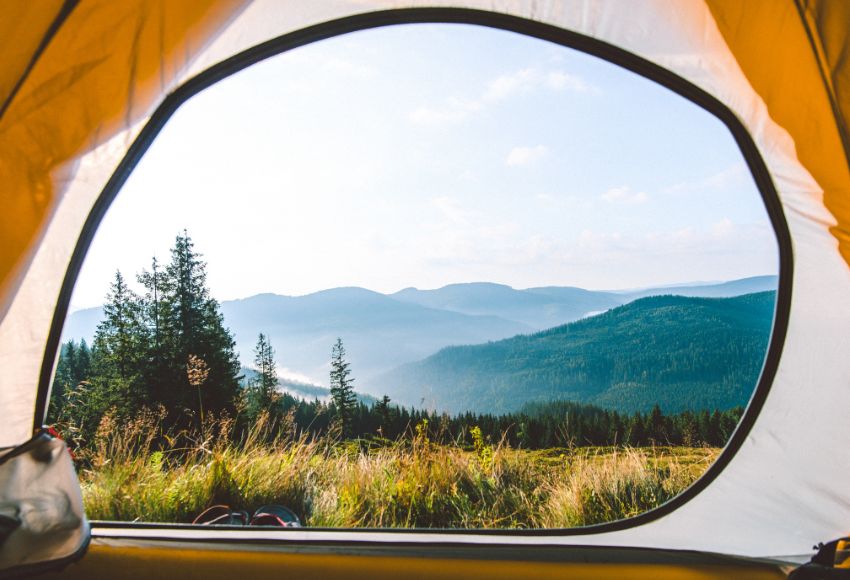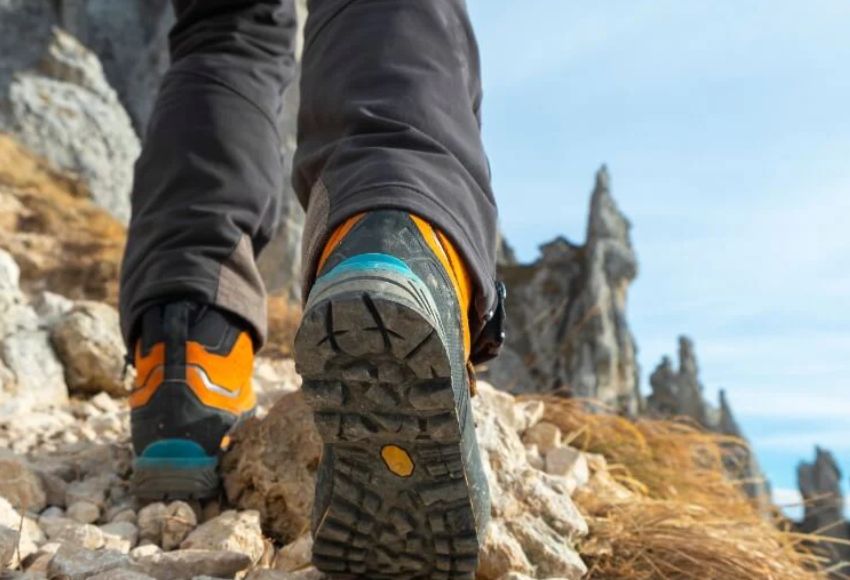What to do if your GPS goes out – and how to really not get lost
Today's trips often start with opening online maps and turning on your GPS. But what if you run out of data, your phone dies, or you lose signal?
In the mountains, in dense forest or on a multi-day trail, you can't rely on technology alone . Navigating using a map, compass and natural terrain signs is a skill that makes the difference between adventure and crisis .
And the good news is that the basics can be learned quickly – and that's what you'll find in this article.
Paper Map: The Basis of Everything
A paper tourist map is not retro. It is the most reliable tool when technology fails - and it is lightweight, battery-free and has more clarity than any screen. But for it to work, you have to be able to read it. And most importantly, be able to connect it with what you see around you .
What you should know:
-
Scale: Most often 1:25,000 or 1:50,000.
1 cm = 250 m or 500 m in terrain
-
Height contour lines: They show the terrain profile - the closer together, the steeper the slope.
-
Trail markings: Colored hiking trails (red = main, blue = intermediate, yellow/green = connectors).
-
Landmarks: Peaks, saddles, streams, road crossings, forests, meadows, rocks, signposts.
Compass
more than just a hand on a watch
How to use it in the foundation:
- Place the map on a flat surface.
- Attach the compass to the map according to the north-south grid.
- Turn the map and compass so that the magnetic needle points north.
- Now you have a map aligned with the real world = the map "points" in the same direction as the terrain.
Thanks to this you know:
- Where are you going?
- how to turn according to the path,
-
how to find the peak or saddle ahead.
You can also learn azimuth, but for normal orientation, it's enough to understand direction and recognize points around you.

Manual: How to use a paper map in the field
1. Align the map according to the cardinal points
- Spread the map on a flat surface (rock, backpack, knee).
- Take a compass and place it against the north-south grid on the map.
-
Turn the map and compass so that the needle points exactly north.
The map is now aligned with the terrain – meaning that north on the map is also north in front of you.
If you don't have a compass, use the Sun to help you: in the morning it rises in the east, at noon it is in the south, and in the evening it is in the west.
2. Find your current position
- Remember: where did you go last? Turns, bridges, peaks?
- Compare the terrain: what hill is on the left? Where is the saddle? Is there a stream, meadow, crossroads nearby?
Try to pinpoint the last "sure spot" where you were absolutely certain you were there.
Then estimate the direction and distance you have traveled since then.
3. Follow contour lines and read the terrain
- The closer the lines are to each other, the steeper the slope.
- The saddles form a "curved valley", the peaks have a circular concentration of lines.
-
The contour lines will tell you where you will climb, where there will be a flat area, and where you will descend.
Try comparing the map with the view in front of you – where is the ridge, where does the forest begin?
4. Plan your route in advance
-
Choose key points (e.g. crossroads, stream, cottage) that you will use to navigate further.
-
Determine where you want to go within the next hour .
-
While walking, check to see if everything matches up – if something doesn't fit, check the route and turns.
5. Work with scale
- Most tourist maps have a scale of 1:25,000 (1 cm = 250 m) or 1:50,000 (1 cm = 500 m).
-
Take a ruler or make landmarks for each kilometer on the edge of the map.
This will help you estimate how much time you will need between two points.
6. Record your journey
- It helps if you make light notes or marks on the map (e.g. crosses at key points).
- Use a pencil or highlighter – it doesn't damage the map and helps you keep track.
Orientation by terrain
Don't have a compass? No problem. The terrain is your best guide – if you know what to look for.
Watch:
-
Peaks and saddles: They are often visible from a distance.
-
Landscape: Steep slopes, ravines, river valleys – everything can be compared to a map.
-
Shadow and light: The sun in the east in the morning, in the south at noon, in the west in the evening.
-
Direction of water flow: Streams and rivers will tell you the direction of the gradient.
-
Signs and trails: Look for signposts, markings on trees, recognizable lines (ridges, roads, streams).
If you stop and look around – and then look at the map – it all starts to make sense.

What to do if you lose your bearings
Anyone can get lost. The important thing is not to panic . Here's how:
- Stop. Breathe. Don't keep walking blindly.
-
Map your surroundings: what do you see, hear, remember?
- Check the last known point on the map.
- Determine the direction you were going and find the nearest landmark.
-
If you are off the route, try to return to the last safe place.
-
As a last resort - stay put, mark your position and wait for help.
Always carry an emergency kit (KPC), basic food, water, and a reflective element.
What to practice before the expedition
Mastering basic orientation is not difficult – but training in a safe environment will help :
-
Learn to rotate the map correctly according to the terrain.
-
Practice recognizing contour lines and elevation profiles.
-
Try to follow only a paper map on a trip without a GPS.
-
Learn to read azimuth or orient a map with a compass.
-
Keep track of where you are – even if you have a signal. Practice mindfulness.
Practice in good weather and in familiar territory - you will gain confidence.
Recommended equipment for navigation without a signal
|
Thing
|
Why have it?
|
|
Tourist map of the area
|
Basic overview, always works
|
|
Compass (even a small plastic one)
|
Helps align the map and find direction
|
|
Waterproof map cover
|
Protection in rain and wind
|
|
Notebook and pencil
|
Notes, coordinates, landmarks
|
|
Mobile with offline maps
|
Backup when there is no signal but the battery remains
|
|
Power bank
|
Keeps your phone alive longer
|
Summary: Navigation is a skill, not an application

The best equipment is the one you have in your head .
For centuries, a paper map, a compass, and the ability to read the landscape were all people had – and it worked. Today, we have the advantage of technology, but we must not be slaves to it.
A true adventurer knows the way not only through GPS, but through the landscape itself.
[/lock]

Odemkni celý Adventurer magazín.
Všechny články, návody, rozhovory, aktuality i příběhy ze světa outdooru bez omezení. Součástí je i premium verze aplikace Adventurer, která slouží pro plánování outdoorových výletů. Najdeš zde tisíce tras a výšlapů. Odemkni si dveře do nekonečného světa dobrodružství.
Přístup ke všem článkům z našeho online magazínu
Prémiový obsah z podcastů s ikonami ze světa outdooru a minidokumentů z výprav
Získáš slevy až 30 % na vybavení a jídla od našich partnerů
Nahrávání tras & GPS nástroje s grafem převýšení
Můžeš si do apky přidávat vlastní trasy a organizovat výlety
Rezervace ubytování a cestovní pojištění
Navigace bez datového připojení - offline mapy
Budeš mít k dispozici databázi vícedenních výletů a itinerářů
Dostaneš přístup k alternativním trasám
Export GPX - nahraj si trasy do hodinek a šetři baterku
Odemkne se ti více druhů map a překryvy map s aktuálním počasím
Aplikace bez reklam - cestuj a plánuj nerušeně









Leave a comment
All comments are moderated before being published.
This site is protected by hCaptcha and the hCaptcha Privacy Policy and Terms of Service apply.